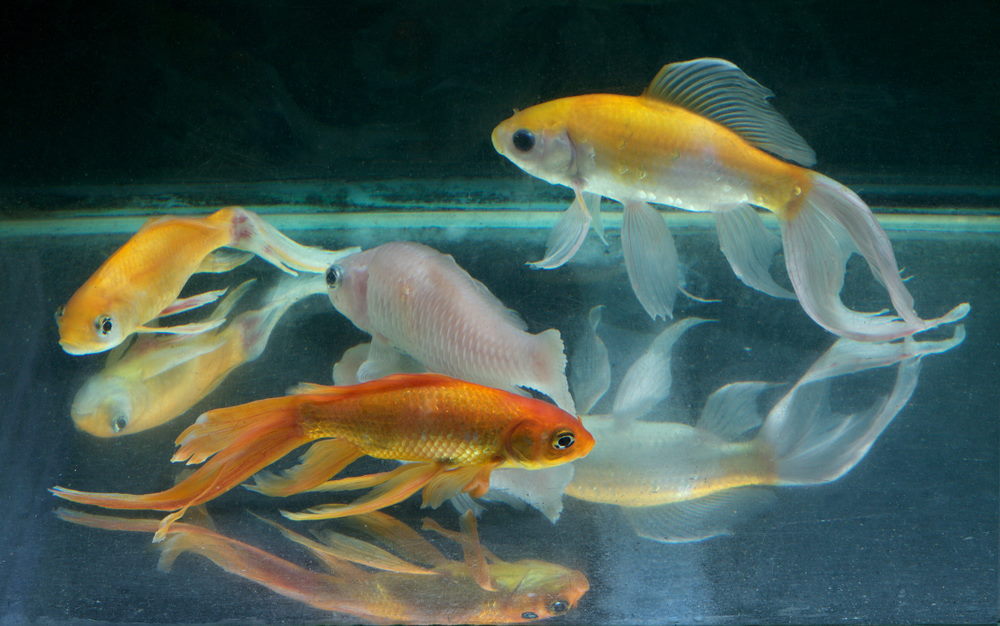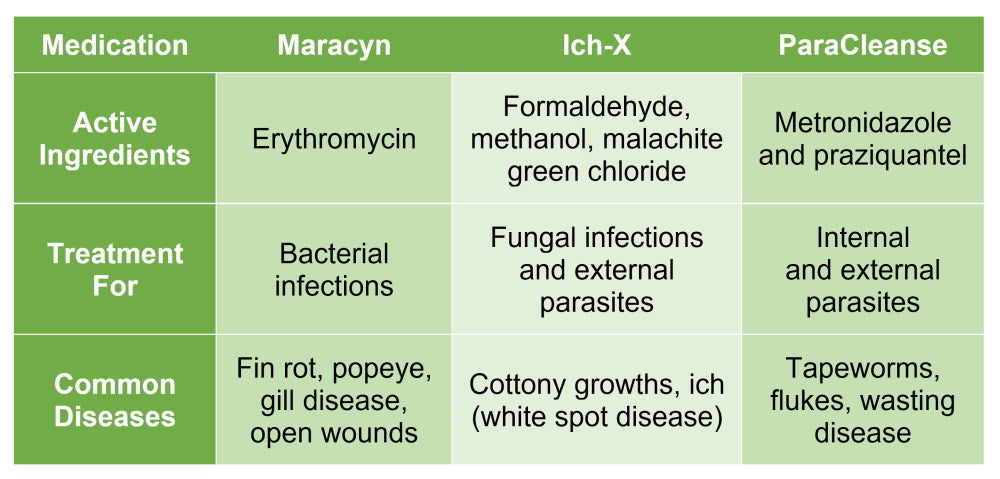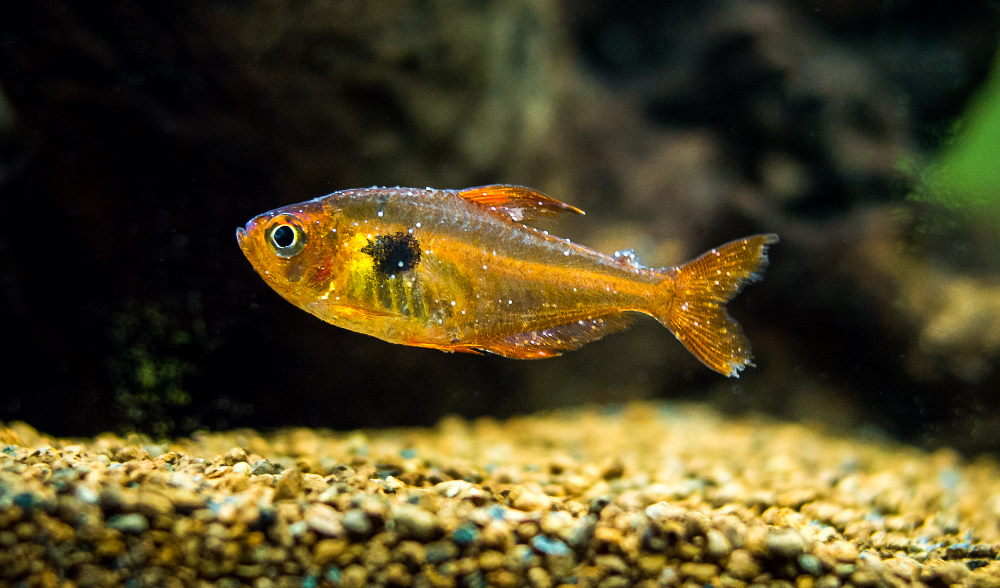How to Treat Sick Aquarium Fish (Even If You’re Not Sure What’s Wrong)
Treating a sick aquarium fish can be difficult, especially if you’re new to the hobby or have never seen this disease before. Based on years of experience helping customers at our fish store and online, here are the step-by-step guidelines and medications we personally use to get our fish back to health as quickly as possible.
Step 1: Do You Have a Quarantine Tank?
A quarantine tank is a smaller, bare tank for the purposes of holding all new fish before adding them into your main display aquarium. This allows you to make sure they’re healthy and won’t potentially infect your other fish. But you may say, “I don’t need a quarantine tank for my new fish because they all look healthy. How is it possible for sickness to come from fish that don’t have any symptoms?” The reason is because the original host fish may carry an illness, but its strong immune system keeps the pathogen under control with no visible signs. When you add it to your main aquarium, the host fish may get stressed by its new environment, thus weakening its immunity and allowing the infection to spread to other fish.
The truth is that when fish come in from a wholesaler, breeder, or fish store, they’re most likely bringing in some kind of pathogen. Any place that keeps a lot of fish together has a higher risk of having fish diseases. Therefore, whenever you buy fish or even get them from a friend, don’t immediately put them into your display aquarium. Instead, the best practice is to set up a quarantine aquarium where you can first observe the fish for symptoms and treat them with preventative medications. (This is similar to how we vaccinate new dogs and cats to prevent common disorders from spreading.) Not only does this avoid the spread of contamination, but it will also save you money and minimize loss of life in the long run.

These fish are acting lethargic, which is a symptom of many types of disorders. Treating them in an isolated, safe environment away from other fish can improve their chances of faster recovery.
In reality, most people do not keep a quarantine tank because they’re either new to the hobby or think it’s too much of a hassle, but it only takes one virulent outbreak to learn the importance of quarantining. If a disease has already been introduced to your display aquarium, we recommend treating the entire tank with medication.
Step 2: Can You Identify What’s Wrong?
Most of the time, fish keepers (especially beginners) do not know what ailment has affected their fish, but doing nothing is also not productive. Ideally, we want to treat the issue as soon as possible to give the fish the best chance of surviving. Therefore, we advise covering all your bases by using broad-spectrum medications for bacterial, fungal, and parasitic infections. However, there are hundreds of medications available all over the world. Which ones will not only offer effective protection against most conditions, but are also safe to use with plants, shrimp, snails, baby fish, and even sensitive, scale-less fish?
After consulting with ichthyologists and spending tens of thousands of dollars in development time and extensive testing, we narrowed down the search to three medications – Mardel Maracyn, Aquarium Solutions Ich-X, and Fritz ParaCleanse. All of these medications are safe to use with each other, and in our experience, they will not harm the beneficial bacteria in your aquarium.

Description of quarantine medication trio
A lot of people ask, “I have two out of these three medications. Is it okay if I replace one of these medications with another brand?” Unfortunately, certain combinations of medications can be toxic, which is why we humans have licensed pharmacists who research and only prescribe drugs that work safely together. Similarly, we have no way of knowing the compatibility of other fish medications without thorough testing, and there are countless types of medication on the market (some of which are only available in certain countries). We also do not know if these unknown products are safe for all fish, invertebrates, plants, and beneficial bacteria.
Step 3: How to Treat Your Sick Fish
If you are fairly certain of which disease your fish has, treat for that specific sickness first with the appropriate medication, and follow the instructions on the packaging or manufacturer’s website. For example, if you see fish fungus, read our full article and consider using Maracyn and Ich-X. If you suspect tapeworms or other internal parasites, use ParaCleanse and make sure to treat the fish again in two to three weeks to kill any remaining eggs that have hatched.

Trio of quarantine medications
On the other hand, if you are quarantining new fish or you are not certain which ailment you’re dealing with, use all three medications at the same time. Oftentimes, a fish may start off with one type of illness, such as a fungal infection. This can create an open wound that leaves itself vulnerable to a secondary bacterial infection. Thus, it’s best to treat for all three types of infection to give the fish the greatest chance of recovery.
- If you are treating new fish, make sure the quarantine tank is far away from your normal display tank, and do not let the tanks share any nets, siphons, buckets, or other equipment. Since droplets of water can travel on your hands to another aquarium, make sure to thoroughly wash your hands and arms with soap and hot water between tanks.
- If you are treating the entire display aquarium, do a thorough cleaning of the tank to make sure the fish’s environment is optimal and free of any stress factors before starting treatment. Wipe the aquarium walls so that you can easily observe the fish’s condition, clean out the waste in your filter, and use a siphon to vacuum the substrate and change the water.
- Remove any chemical filtration (such as activated carbon or Purigen), and turn off any UV sterilizers you may be using. Consider adding extra surface agitation (such as with a simple air stone and air pump), since some medications can change the water’s viscosity and hamper with the fish’s breathing ability.
- Do not dose according to the box instructions. Instead, add 1 packet of Maracyn, 1 packet of ParaCleanse, and 1 U.S. teaspoon of Ich-X for every 10 gallons of aquarium water. (Ich-X does not stain aquarium decorations in our experience, but be careful not to spill it because it can stain your skin or clothing.)
- Let the fish soak in the medication, and do not feed them or change any water for 1 week. (If you feel you must feed your fish, wait until Day 4 or 5, and only feed them very lightly.) You should keep the aquarium filter and heater on during this time. Also, aquarium lighting will not deactivate the medication.
- After 1 week has passed, change out 30% of the water in the aquarium. Resume feeding the fish, keep the water quality high, and watch for any change in symptoms.
If you have very weak fish, it may be easier on their bodies to space out the treatment. Bacterial infections are the most common, so use Maracyn first for a week (at the dosage recommended in Step 4). Ich and external parasites are the second most common, so next treat the fish with Ich-X for a week. Internal worms and gill flukes are slower-acting pathogens, so dose ParaCleanse in the third week.

If you are able to clearly identify the illness (such as ich), switch over to the correct medication and finish the rest of the quarantine med trio afterwards.
When you start the quarantine medication treatment, a few days later you may see obvious signs of an outbreak like ich (or white spot disease). Change 30% of the water, and follow the manufacturer’s instructions for the medication you need to use (e.g., Ich-X in this case). Once the ich is beaten, wait a couple of weeks with no medication to give the fish a break, and then follow up by treating with the other two quarantine medications (e.g., Maracyn and ParaCleanse) for 1 week as originally suggested.
If you have never treated any of your fish before, consider treating all of them and starting with a clean slate. Then proactively treat all new fish that enter your home so that nothing slips through. Yes, medication can be expensive, but pathogens can lie dormant for a long time, waiting for the chance to take over your fish’s immune system if they get stressed or we lapse on tank maintenance. Based on personal experience, we recommend always having these medications on hand in case of emergency. Chances are that you won’t be able to find them last minute at your local pet store and will have to either wait several days to receive an online shipment or settle for an untested brand that may not work at all.
Take an Active Role in Your Fish’s Health
We are very passionate about quarantining all new fish, no matter who you get them from, because even changing their environment (e.g., different water parameters or new social hierarchy) can trigger disease. That’s why we preventively medicate every single fish that enters our fish store and ensure they have a clean bill of health before leaving our care. In the same way, take the proper precautions to ensure your own fish can lead long and healthy lives.
Are you dealing with a specific sickness in your aquarium fish? Check out our list of articles with detailed instructions to help you:




